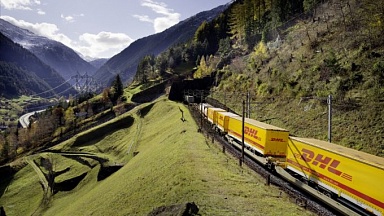As KTZ Chairman Mr. Sauranbayev said during his speech at the Fourth Railway Congress in Moscow: «Kazakhstan has always been, is and will continue to be an important partner in exporting Russian cargo to Central and Southeast Asia, China, and the Persian Gulf. The mega challenge we face today is to build a new railway framework for Eurasia».
Junction points are necessary
According to him, re-routing cargo flows from traditional routes has caused a sharp rise in freight shipment through border crossings, which has put an unprecedented strain on the rail infrastructure. Meanwhile, the demand for transportation is only expected to increase.
Today, the rail service between the two countries runs through nine international junction points.
«To meet the needs of Russian and Belarusian exporters in transportation to the Chinese direction, today we have started construction of two infrastructure projects. This is the construction of a second line on the Dostyk-Moyinty section, which will make it possible to expand the throughput capacity of the section five times. We are starting construction of a new railroad on the section Bakhty-Ayagoz and the third border crossing with China», — said Nurlan Sauranbayev.
KTZ is building railroad infrastructure in several directions, and when it is completed, traffic load will noticeable increase at the junction points that border Russia. «It is therefore essential to take action to develop each of them. We suggest that our railroads be more closely integrated. For instance, Nurlan Sauranbaev proposed that traffic be resumed at the two checkpoints that were previously in operation, „Zolotaya Sopka“ and „Russkaya Polyana,“ which would provide organizational flexibility for traffic management».
The head of Kazakhstan Railways paid special attention to the development of the North-South ITC. According to their data, in 2023 the volume of transportation along the eastern route of the international transport corridor reached 1.9 million tons, increasing by 11% versus 2022. Meanwhile the transit of Russian cargoes along the eastern direction through the territory of Kazakhstan increased by 28%.
Development of the North-South ITC
KTZ assumes that there are infrastructure limits to the current throughput of all three North-South Corridor routes. To address these issues, the company plans to gradually increase the throughput of its ITC’s eastbound rail component. «In the near future, the expansion of the Eletsk-1 station (extension of the line) and the Orsk-Kanjagash section (construction of the second line) are planned. In addition, the construction of a crossing loop and a second line of more than 2,000 kilometers is planned,» said Nurlan Sauranbayev.
Also, our Kazakh colleagues suggest rerouting part of Russian cargoes going to Iran and the Persian Gulf countries through the Kazakh ports of Aktau and Kuryk. The head of KTZ asserts that broad cooperation is critical to the advancement of this course. Because of this, a joint audit has already been carried out, and changes have been made to the infrastructure to remove bottlenecks based on the audit’s findings.
Working with neighbors
Nurlan Sauranbaev believes a joint venture (JV) needs to be created in order to consolidate such dynamics of transportation, by analogy with JSC United Transport and Logistics Company — Eurasian Railway Alliance (UTLC ERA, an operator of transit container services, transporting cargo in regular container trains on the route China — Europe — China through the territory of Russia, Kazakhstan and Belarus. — Ed.). This JV should act as a single logistics operator providing integrated logistics services along the entire route, with a single fare for the organization of container and non-containerized cargo transportation.
Concurrently, KTZ continues to collaborate with neighboring nations. Afghanistan and Central Asia continue to be the key areas of collaboration with Uzbek colleagues. For instance, the Saryagash border crossing on the Turkmenistan border now has a 50% larger capacity. By 2024, at least thirty pairs of trains per day are expected to travel in this direction.
In order to reduce the burden on the Saryagash station and guarantee the passage of an extra volume of 20 million tons in the direction of Central Asian countries, a new line called Darbaza-Maktaaral is now under development.
In conclusion of his speech, the Chairman of the Board of KTZ noted that construction pace has gained traction and by 2030 a new transportation framework of Eurasia with access to new markets should be formed. «For this purpose it is necessary to jointly intensify work on synchronous development of interstate junction points, checkpoints and elimination of bottlenecks. We appreciate our relationship and will always remain your trustworthy allies», summarized Nurlan Sauranbayev.





